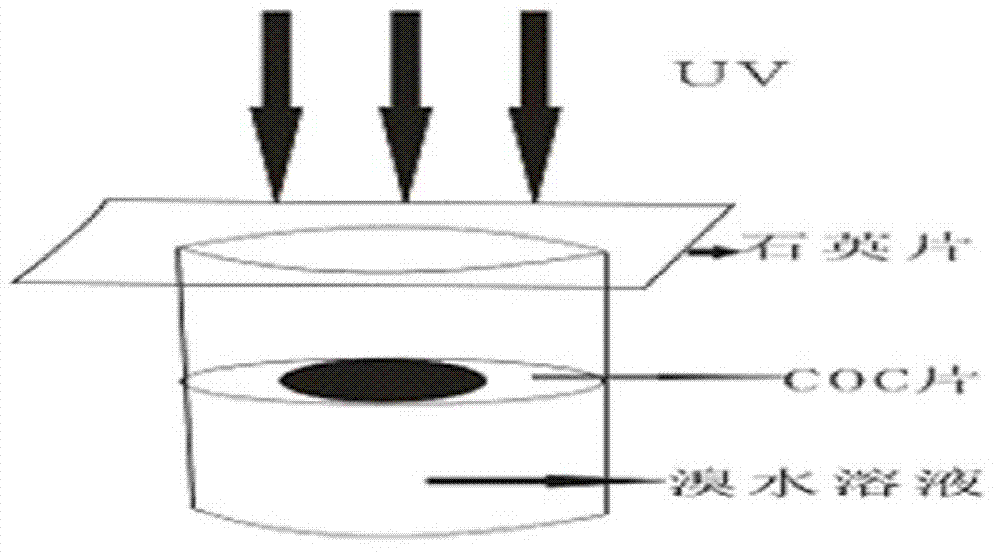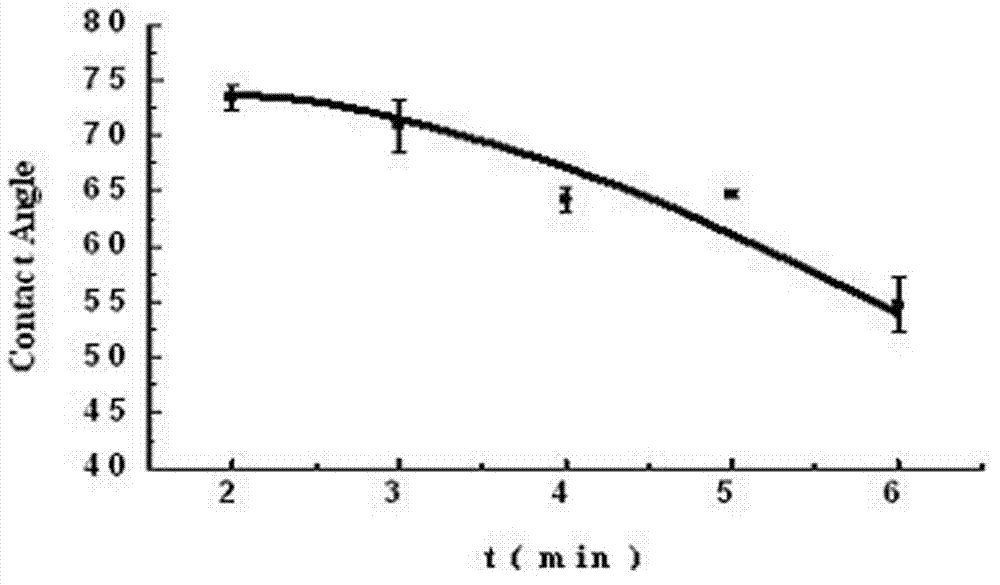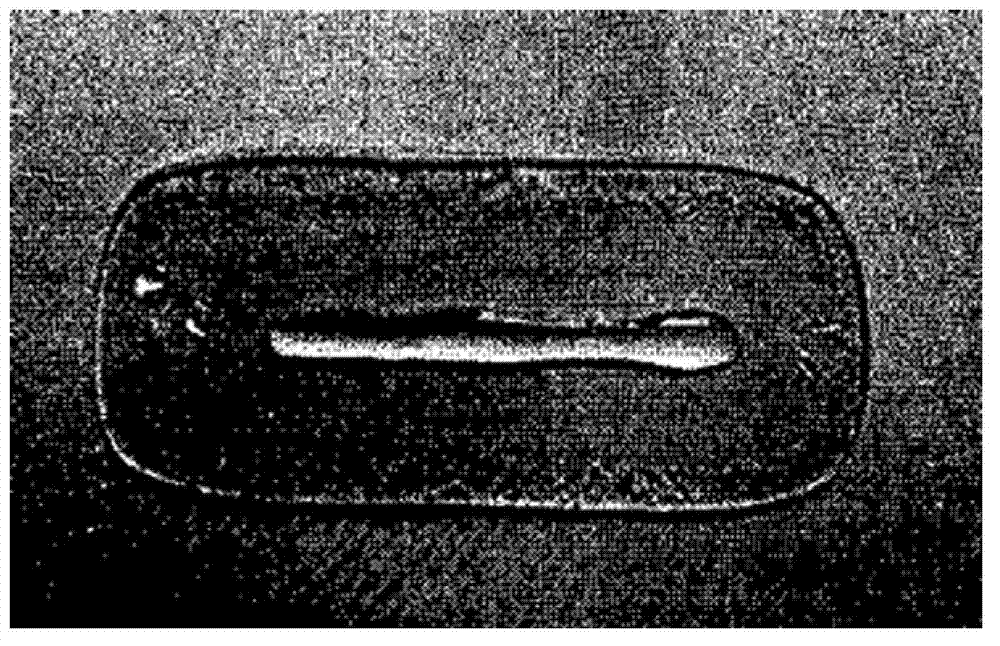Photoinduction modifying method for COC
A cyclic olefin copolymer and light-induced technology, which is applied in the field of light-induced modification of cyclic olefin copolymers, and can solve the problems of complicated and time-consuming operation.
- Summary
- Abstract
- Description
- Claims
- Application Information
AI Technical Summary
Problems solved by technology
Method used
Image
Examples
Embodiment 1
[0025] Cut the commercially available COC sheet into 1cm×1cm size, clean it, clamp it with a glass slide, and heat press it in an oven at 135-160°C for 20-30min until it becomes transparent. Put 2 mL of bromine aqueous solution (volume percent concentration: 1%) into the weighing bottle, put the autoclaved COC chips into the bromine water, cover the weighing bottle with a quartz chip, and then set the device at 5.3 mW / cm 2 The light-induced bromination reaction is carried out under the irradiation of ultraviolet light, and the light time is 2-6min, such as figure 1 As shown, bromine-modified COC sheets were obtained.
Embodiment 2
[0027] The bromine-modified COC sheet of Example 1 was completely immersed in 4ml of 1mol / L sodium hydroxide solution, heated in an oven at 80°C for 50min, and rinsed with distilled water to obtain bromine-sodium hydroxide modified COC sheet. figure 2 It is the effect of light time on the contact angle of bromine-sodium hydroxide modified COC sheets with water during bromine modification. The results show that with the increase of light time, the contact angle decreases significantly, which shows that the modified COC The hydrophilicity of the sheet can be significantly enhanced.
Embodiment 3
[0029] The bromine-modified COC sheet of Example 1 was immersed in 4ml of ethylenediamine, heated at 80°C for 30min, and rinsed with distilled water to obtain bromine-ethylenediamine-modified COC sheet.
[0030] The influence of different modification methods on the contact angle between COC sheet and water:
[0031]
[0032] The light time of different modification methods is 5min, and the hydrophilicity of the modified COC sheet is improved.
PUM
 Login to View More
Login to View More Abstract
Description
Claims
Application Information
 Login to View More
Login to View More - R&D Engineer
- R&D Manager
- IP Professional
- Industry Leading Data Capabilities
- Powerful AI technology
- Patent DNA Extraction
Browse by: Latest US Patents, China's latest patents, Technical Efficacy Thesaurus, Application Domain, Technology Topic, Popular Technical Reports.
© 2024 PatSnap. All rights reserved.Legal|Privacy policy|Modern Slavery Act Transparency Statement|Sitemap|About US| Contact US: help@patsnap.com










